Travel may be limited for many foodies and kitchen aficionados, but a taste of Singapore is just a mouse click away. Food Playground, one of Singapore’s top cooking schools, has taken the Covid-19 lemons and made lemonade by now offering online cultural cooking classes. Now that’s a pandemic silver lining I can appreciate. 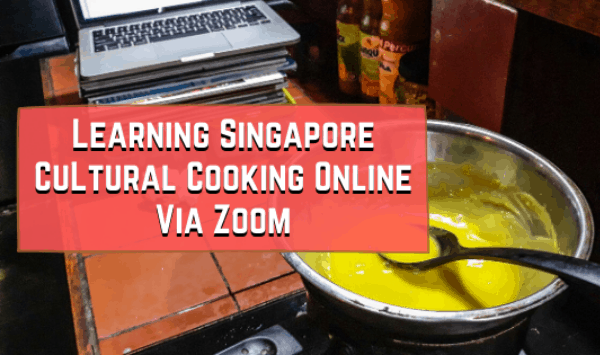
By silver lining I mean that although the world travel experience has been greatly impacted at the moment, it has also opened up a whole new world of virtual travel experiences for those who may never have the opportunity to leave their homes or home countries (regardless of covid-19 travel restrictions); those with physical and health limitations.
But you may be one of those who swears by You Tube. In fact, one of my good friends is always boasting “Oh I can learn that on You Tube for free”. Since I just took one of these classes, and am no longer an online class newbie, I can tell you that it’s just not the same. Watching a You Tube tutorial that is a one-sided conversation is not nearly the same experience as having a two-way conversation with a real live Singaporean.
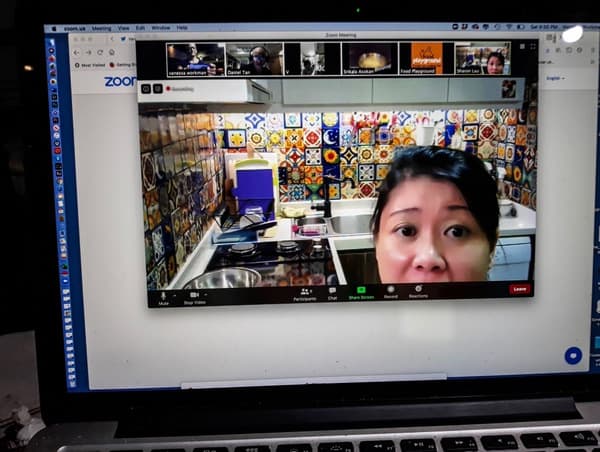
Who is Food Playground?
Food Playground is a Singapore based cooking school that gives back to their community by hiring stay at home moms and active seniors to teach their classes as well as handle many other business-related responsibilities. Founder Daniel Tan started this program in 2012 as a business with a ‘social mission’.
“Our social mission at Food Playground is to help more stay-at-home mothers and active seniors return to the workforce by training them to become proficient cooking instructors so they can put their culinary talents to good use, earn some income for their families and regain their self-confidence.”
“During this difficult Covid-19 pandemic period, many of them have a drastic reduction in income, which is why we are helping them transition to teaching classes online so they can find an alternative means of making a living and keeping their culinary passion alive.”
-Daniel Tan, Founder of Food Playground
This was not my first time to take a cultural cooking class with Food Playground. Pre-pandemic I was able to take one of their onsite classes during my last trip to Singapore, which you can read about HERE.
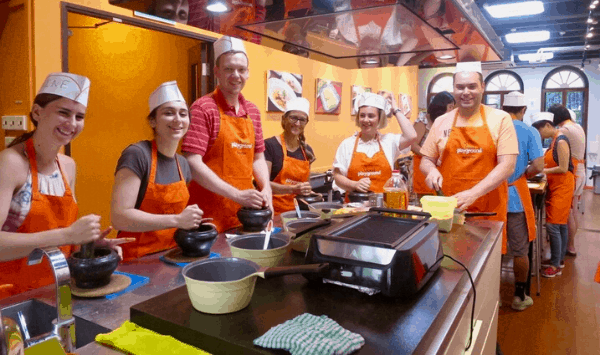
Funny story about that. After classes, Food Playground will email their class recipes to the students. My favorite recipe from my class had been Char Kuey Teow. When I made it in class and at home, it was delicious. When my husband made it, it tasted weird. And each time he told me he followed the recipe. Finally, I discovered that he wasn’t using the recipe from class but had just Googled and used whatever recipe popped up.
One of the things that makes Food Playground onsite and online cultural cooking classes unique, is that the recipes and techniques used, come from the staff. Authentic recipes and techniques that have been handed down from generation to generation. You will not find them by Googling.
Zooming in on a Cultural Cooking Experience
For those who don’t know, Zoom is a cloud-based video conferencing application very similar to Skype. It is free to download, and the basic use version is also free. Food Playground has a business account with them, so students do not need to upgrade their free version account to attend the online classes.
I had never used Zoom before and was sure that I would mess up my connection somehow and delay the class or miss it entirely. Not being especially tech savvy, I had only seen the intimidating images of Zoom gatherings of well-coiffed and well-spoken professionals. But! I bit the bullet, and everything worked out just fine. Maybe I looked a bit grainy, but I’ll blame my kitchen lighting for that. I could see my instructor very clearly and she could see me and that was the most important thing.

Food Playground recommends just setting up your smart phone in the kitchen, but I opted to set up my laptop and have my phone on standby. (Zoom is downloadable to both).
Once you have booked one of the online cultural cooking classes, Food Playground will send you a special link and pass code to join your scheduled online class closer to the actual date. They will also send you instructions on how to use the Zoom software for the class. You will be able to log in early and test the sound and see how much of your cooking area is visible to the instructor and adjust accordingly. It is very user friendly.
My two cents:
-If you plan on documenting the experience you may want to adjust your kitchen lighting, so you and your photos look their best.
Transporting my Kitchen to Singapore
Once your booking is confirmed, Food Playground will send you a list of ingredients and kitchen equipment to prepare. Having everything set up in advance saves valuable class time. Not being much of a kitchen maven I was also unsure about not having any ‘fancy’ cooking equipment. Fortunately, the cultural cooking recipes don’t require any fancy equipment. Especially the kaya recipe we tackled. One saucepan and a double boiler; which can be easily made with a pot and metal bowl. If you aren’t sure what you have or don’t have, Food Playground will find a way to work with what you do have.
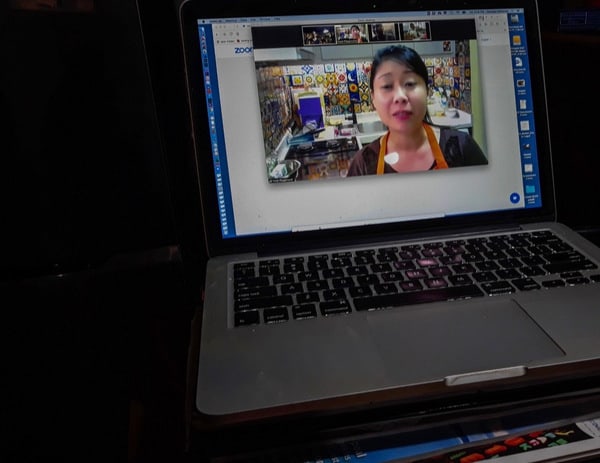
The Hainanese Carmel Kaya recipe my class made was a challenge but was easy to do. It also only required 3 ingredients, which are readily available internationally; egg yolks, sugar and coconut milk. Seriously, it was just that uncomplicated. If students want to create a Pandan flavored Kaya, instructions are also provided for adding Pandan leaves (which is not necessarily an easy to get ingredient).
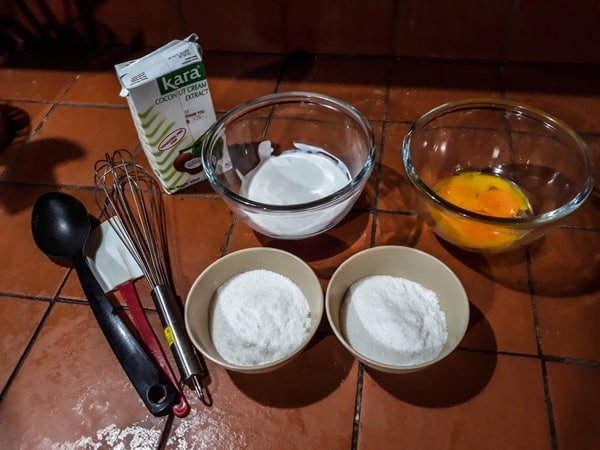
For those unfamiliar with ‘kaya’, kaya is a coconut jam. Kaya is the Malay word for ‘rich’ in reference to the jam’s rich texture. It is also called srikaya (coconut egg jam). Kaya is thought to have been brought to Malaya (which included Singapura at the time) by the Portuguese during their occupation of Melaka in the 15th century. The popular Hainanese version of kaya being similar to Portugal’s Doce De Ovos (sweet egg cream). Other recipes presently included in Food Playground’s online curriculum include Curry Puffs (a savory pastry) and Mee Hoon Kueh (an authentic noodle dish).
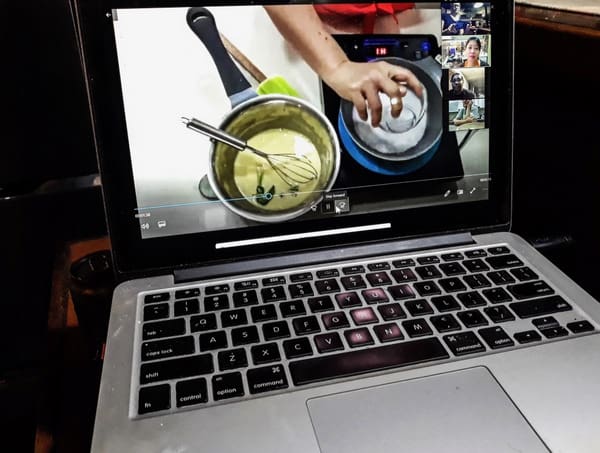
My Hainanese Carmel Kaya efforts were a great success and my final product was absolutely delicious. And just for the record my husband also tried to make this dish (from the proper Food Playground recipe) and his kaya did not taste anywhere near as good as mine did.
My two cents:
-If your kitchen is a wreck, you may want to tidy up a bit for your virtual visitors.
-And if your cat is one to show up on a kitchen counter to investigate anything that has to do with food, lock them out of the kitchen.

My Verdict?
My experience taking one of Food Playground’s online cultural cooking classes was educational as well as fun. I highly recommend these classes for anyone who is interested to learn a new recipe, meet new people or have a virtual Singapore travel experience.
Check out Food Playground’s You Tube video for a closer look at their online cooking classes.

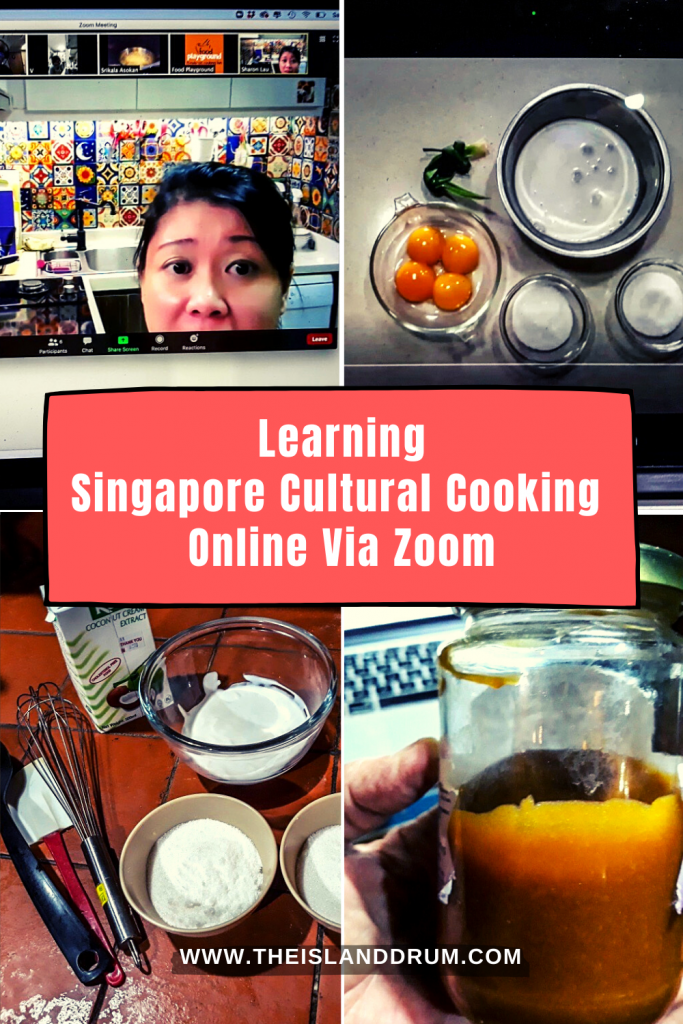

Leave a Reply